"If your value is to create communities that serve and uplift your residents, what will you do in your project to help move the needle and nudge the field when it comes to prioritizing resident engagement, beauty, green space, and energy efficiency?"—Alexis London
As Phase 2 of an ambitious $58M redevelopment project nears completion, a Madison community is proving that affordable housing can be attractive, just, and healing
When aging public and affordable housing in the U.S. gets redeveloped, the construction projects typically progress according to the plans and needs of managers and government officials. But Bayview, a culturally diverse, low-income community of 300 residents in the heart of Madison, Wisconsin, chose a distinctly different approach. “It started with a belief that the people who are going to use the space, live in the space, call the space their home, are the experts on what it is they need and what’s going to help them and their families thrive,” said Alexis London, Executive Director of the Bayview Foundation, which manages the complex originally built in 1971.
As their ambitious $58M redevelopment project nears Phase 2 completion, Bayview is emerging as a national model of what’s possible for the nation’s aging affordable housing infrastructure. They’re showing that affordable housing designed by centering residents is possible and ideal for achieving the types of resilient, equitable, and sustainable communities that citizens, policymakers, and housing programs desire.
“I think (Bayview’s) success is important, and what they are doing is significant,” said Alder Tag Evers, the Madison city council representative for Bayview’s district. “They’re a positive role model for other projects and developments, not only in Madison, but in other parts of the country as well.” London views the commitment to bringing Bayview’s residents into the redevelopment process as an extension of putting community values of equity and inclusion into action.
“If your value is to create communities that serve and uplift your residents, what will you do in your project to help move the needle and nudge the field when it comes to prioritizing resident engagement, beauty, green space, and energy efficiency?” London asked.
These questions resonate not only for Bayview’s redevelopment but for the sizable stock of the nation’s low-income, affordable housing communities slated for construction or renovation. Bayview’s example offers proof and lessons for moving public and affordable housing toward more equitable outcomes.
“I think (Bayview’s) success is important, and what they are doing is significant. They’re a positive role model for other projects and developments, not only in Madison, but in other parts of the country as well.”—Alder Tag Evers, Madison city council representative for Bayview’s district
Start early. A values-based process takes time, compromise, and flexibility. Engaging residents or potential community members takes longer than typical redevelopment projects.
“Some might regard it as inefficient,” Alder Evers observed. “But when you’re dealing with a vulnerable population of people from essentially marginalized communities who are used to getting perhaps less than fair treatment from the status quo authorities that they had to deal with throughout their lives to really listen, to slow the process down to the extent to which peoples’ voice are heard, it takes time.”
It also means getting the entire team of architects, contractors, and financial partners on board early about the values-based process, even though, it represents a new way of doing business for many of them.
“There needs to be some understanding on both sides of the values that are driving the project and the common goals,” said London. “They might not be exactly the same, but there needs to be some appreciation for each partner's contribution to that goal, even if it's not 100% exactly your own vision.” Mutual respect, she says, is key.
“There's constant compromise and sort of back and forth and negotiating various elements of the project because… it’s just such a big project,” London said. When completed, Bayview will feature two new apartment complexes, 57 townhomes, a brand-new community center, revitalized green space, energy efficiency measures, and public art projects. “We wouldn't be able to find partners that were 100% in line with us.” And while she admits to being frequently challenged, she accepts that compromise and flexibility are required for any project of this scope.
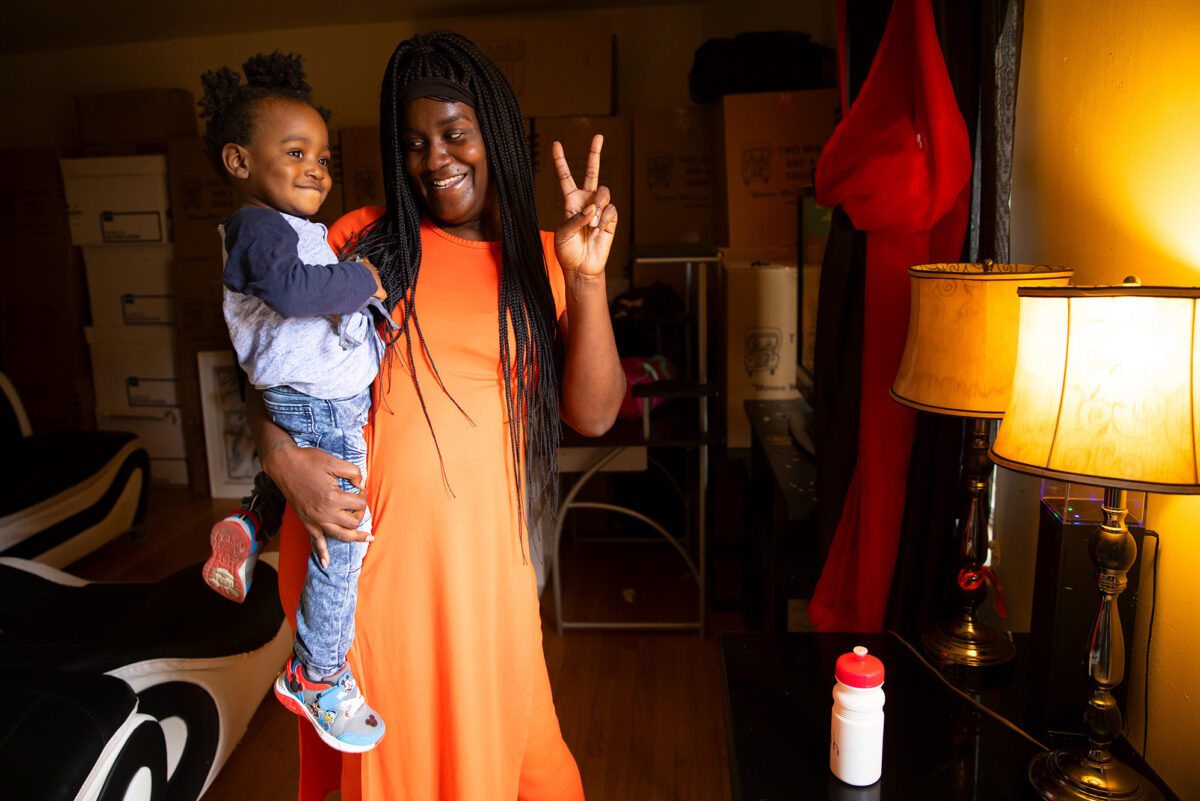
Gabrielle Ward, Bayview resident and mother of five, with her son Cortez as they pack their apartment in preparation for moving to their new unit.
Listening means engaging authentically and setting aside preconceived ideas.
Resident Gabrielle Ward said she was quiet when she first started attending planning meetings. A mother of five known in Bayview for her talents as a chef and hair stylist, she advocated for safer crosswalks and expanded children’s activities. When staff members listened to her input, Ward noticed. “They actually did it,” she said.
Listening to residents like Ward not only resulted in improvements for all the residents of Bayview but also elevated Ward’s agency in her community. “I feel so comfortable to share my mind,” Ward said. “I feel safe. I feel at home.”
Early in the process, London wondered specifically about how residents viewed ideas of safety and home. “Where do these two intersect, and what do they mean to somebody who is a refugee or immigrant?” asked London. “What do they mean to someone who has been living in their car? Or who has lived in a suburban neighborhood all their lives?” For Bayview’s leadership, it required listening rather than imposing an agenda on the redevelopment plans.
Active engagement took many forms in a community as diverse as Bayview's, which includes Hmong, Latinx, Africans and African Americans who speak more than 12 languages. Bayview brought in interpreters to ensure Bayview’s Hmong- and Spanish-speaking residents had a voice in the process. Leadership shared regular status reports and met with residents around potluck dinners.
Diane Eddings, Bayview’s housing manager, said one of her favorite parts of their listening process was the architects’ work with the residents. “We heard residents want gardening and places that elevate their spirit, and they want color and beauty and air conditioning,” Eddings said. The architects took many of the residents' requests and showed them in the plans how they would be incorporated.
“This is what you said. This is what we did in the design,” Eddings said. The results included individual garden plots, brightly colored buildings, higher ceilings and larger windows, air conditioning, and washer-dryers in each unit. All these elements help reduce daily burdens, enhance wellbeing, and support the residents’ vision of home.
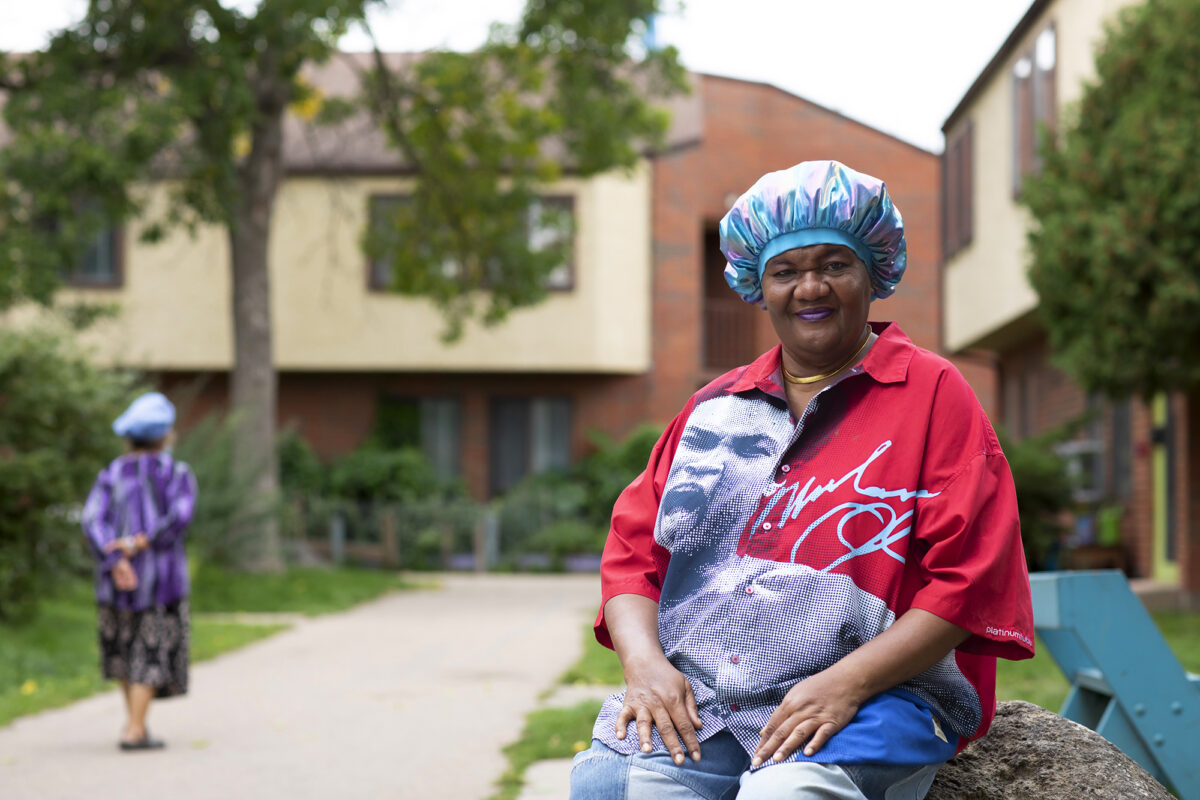
Denise Baker, a Bayview resident for almost 20 years passed away suddenly before this article’s publication. Baker was a regular contributor at the planning meetings. She started going to “know for herself” and spread the word in the community.
Denise Baker had been a resident at Bayview for almost 20 years and passed away unexpectedly shortly after her interview for this article. Remembered by London and her neighbors as embodying the best of Bayview, Baker said she started going to the meetings to “know for herself” and spread the word in the community. She believed the upgrades at Bayview were going to improve her fellow residents’ lives. “The washing machine and dryer and the air conditioning are blessings to our community,” Baker explained, observing that many residents had to carry their laundry to central facilities or laundromats.
“Because people here, by them being older, they really need that,” Baker said. “And there’s people here on oxygen who have a tank and everything, so the air (conditioning) is really going to help them, too.
Bayview’s process also included hard conversations about elements they could not deliver. “Along the way, you have to start to set expectations appropriate for your budget, the size of your project, and the amount of space you have,” said London. There are parameters, she said, and the leadership and community need to keep them in mind. “But we’ve found that if you state very honestly and openly and directly along the process that an idea could be wonderful but is beyond the project’s parameters, people accept it and then they eventually move on,” she said.
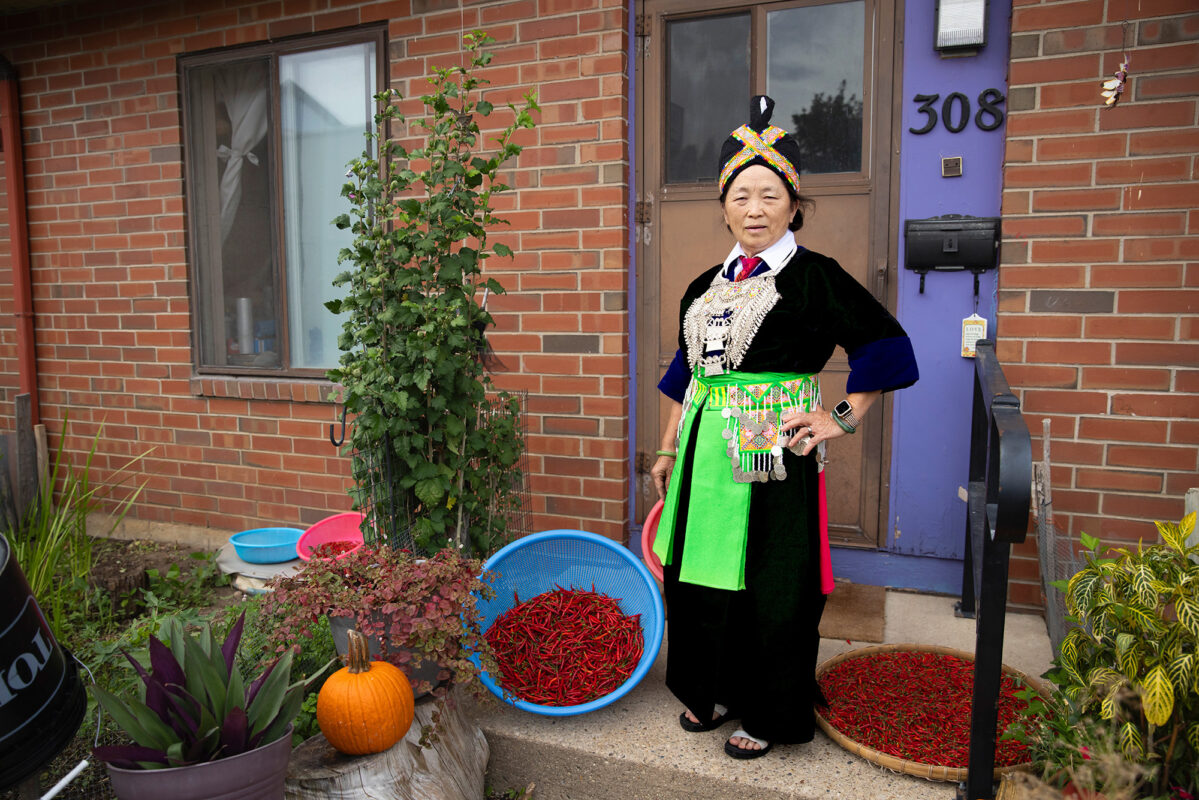
Mee Vang, a Hmong immigrant, has lived at Bayview for more than 15 years.
It’s not just about redeveloping affordable housing units
"I think we’re missing an opportunity when we build cookie-cutter housing,” said Eddings, who in addition to serving as Bayview’s housing manager, has a background in social work. Eddings believes it’s one thing to build 100 more units of affordable housing, but the process of revitalizing low-income communities can’t stop there.
“People have a place to stay,” Eddings said. “But if we want to really, truly address the housing crisis, we need to stabilize families and provide the support services needed for them to thrive and eventually move on.” When Bayview cuts the ribbon on the completion of the new community center at the end of Phase 2, a central part of their commitment to the community’s wellbeing will be launched.
At 11,500 square feet, the new building will include four youth classrooms, an adult education classroom, a technology hub, an art studio, a senior lounge, a food pantry, and a fitness room. Along with its surrounding outdoor features (basketball court, public gardens, a playground, and several gathering spaces) the new center will allow Bayview to expand programming and hours. The center will help further strengthen the community.
For Ward, the mother of five, the community center provides her younger children with after school activities, while her older children found jobs through the center. “The summer camp programming is really awesome,” Ward added. She also aspires to launch her catering business with support from the center.
For Mee Vang, a Hmong immigrant who has lived at Bayview for more than 15 years, the community center gives her a sense of home after having lost her family. Through Pa Der Lor, a Bayview interpreter and program coordinator, Vang said she liked the community center best. She appreciates the welcome she gets from the staff and the opportunity to access groceries and food. “I spend more time at the community center than I do in my home,” Vang said.
Eddings emphasized that these types of daily connections and grounding support services for families are critical for supporting low-income families and stabilizing communities beyond the four walls of their homes. Too often, affordable housing policymakers don’t value or understand this community building aspect. “None of those folks are ever talking to residents sitting in my office crying about what’s going on in their lives,” Eddings said.
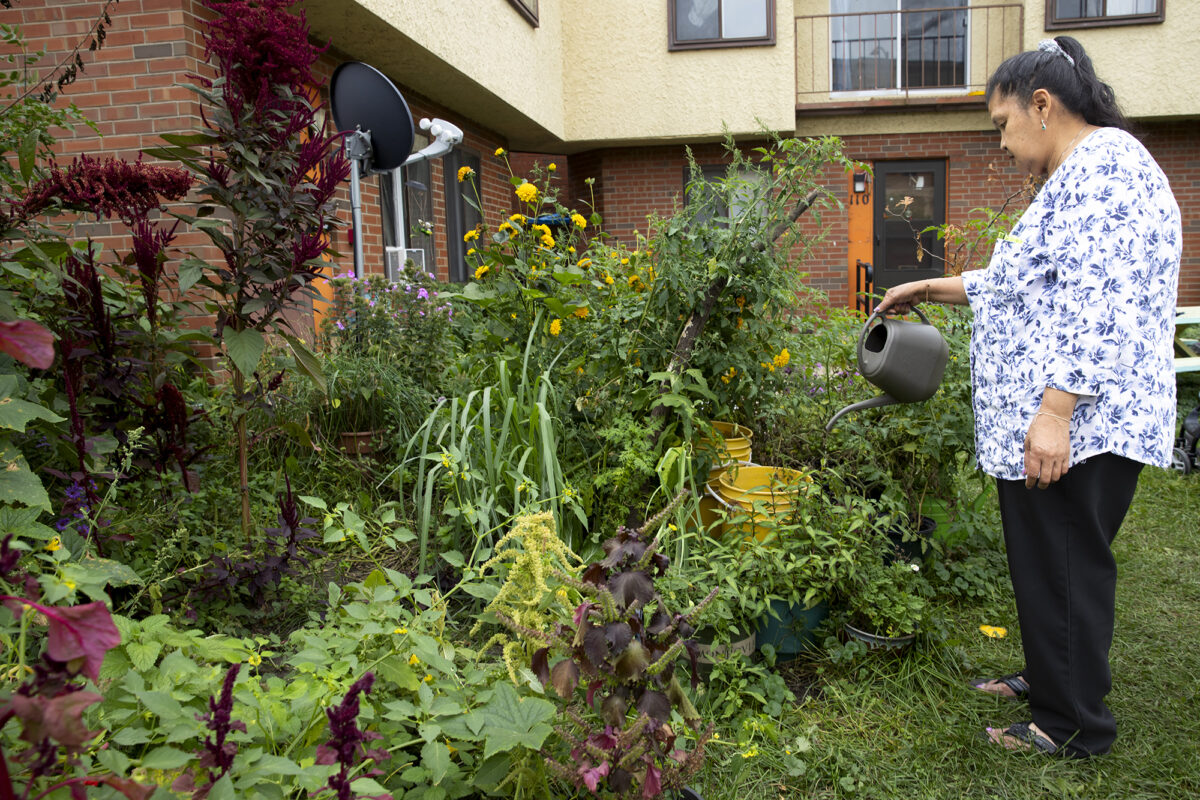
Teang Ou in her garden. Residents stressed how important it was to integrate green space in easy access and relationship to their homes.
Thoughtful green space matters.
“When we asked people what is healing to them and how they experience healing in their lives,” London said, “the responses were all nature-based.” She said their comments “really hit home” for her about how important it was to integrate play space, gardening space, and unprogrammed green space in easy access and relationship to their homes.
While she wasn’t surprised by their requests, London recognized how easily overlooked green space can be in affordable housing construction and neighborhood redevelopment planning. “A lot of the residents who live at Bayview, their daily lives are difficult. They're in low-paying jobs. They've got lots of responsibilities at home,” London observes. “They may or may not have transportation. And language might be a barrier.”
London sees value in creating space that reflects their desires and helps lift their spirits.
“It kind of goes back to this idea of intentionality and actively thinking about promoting social change in your work. (We are) always considering what would and could be healing and how that question matters in housing and community development,” she said.
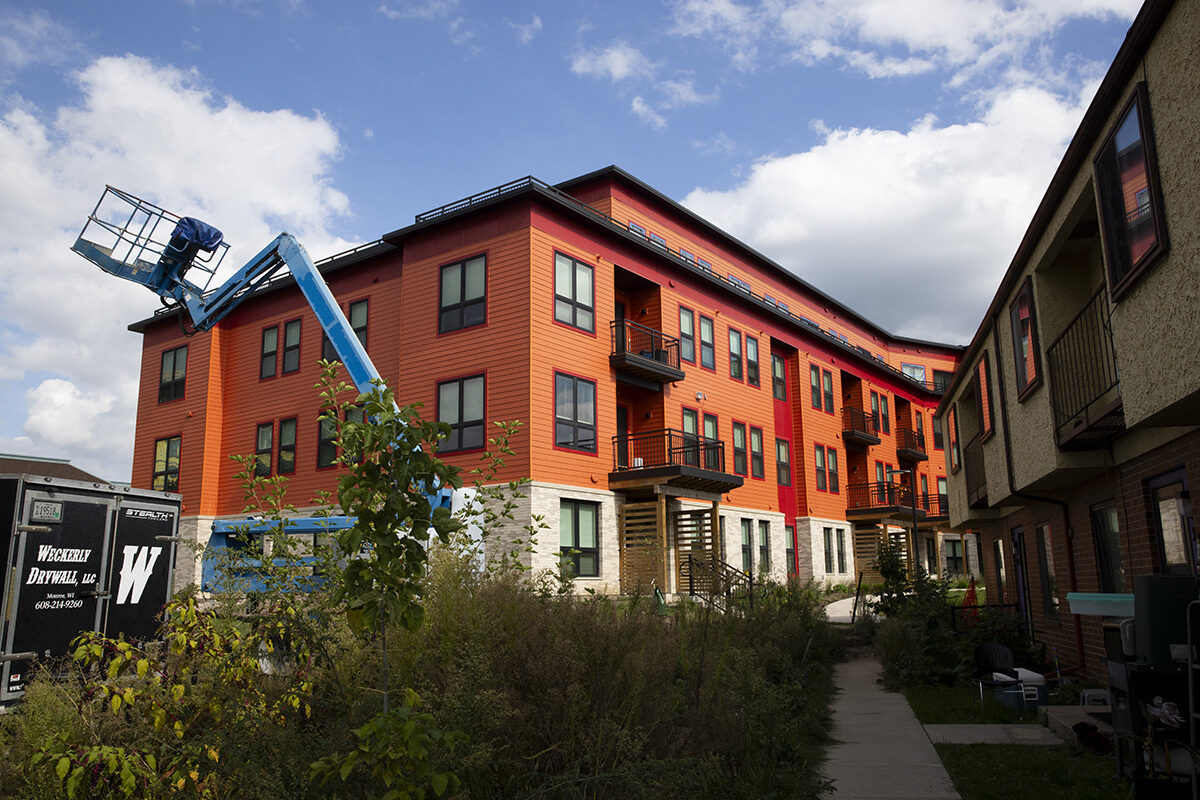
Once the buildings are completed and the new community center is open, Bayview will encourage the community to do their part.
A purposefully built community is a community that is healthier, vibrant, and ultimately stronger and serves the greater good.—Alexis London
Expand notions of the bottom line.
To be clear, the traditional bottom line associated with Bayview’s community-centered design comes with a higher price tag than traditional affordable housing redevelopment projects. The upfront costs are higher regarding staff time and needed expertise, and the redevelopment is occurring in the context of rising construction costs nationwide. Financing is also complex, requiring federal and state housing subsidies, local tax credits, and private funding.
Yet, London and Bayview argue there is also a cost to not pursuing more equitable housing where low-income citizens have a stake in the design of their communities. The payoff goes beyond the redevelopment to create healthier, revitalized, and more equitable neighborhoods.
“The payback will be tenfold and so worth it,” said London. “A purposefully built community is a community that is healthier, vibrant, and ultimately stronger and serves the greater good.”
Redevelopment is a beginning for the community, not an end. London views the redevelopment of Bayview as the beginning of a conversation with the community, not the end. Once the buildings are completed and the new community center is open, Bayview will encourage the community to do their part.
“How are you going to help continue to keep Bayview strong and beautiful? How can you contribute and build on these resources so your kid can go to college and meet their aspirations?” asked London. “And then we respond to that. We’re evolving. It’s generative.”
Remembering Denise Baker
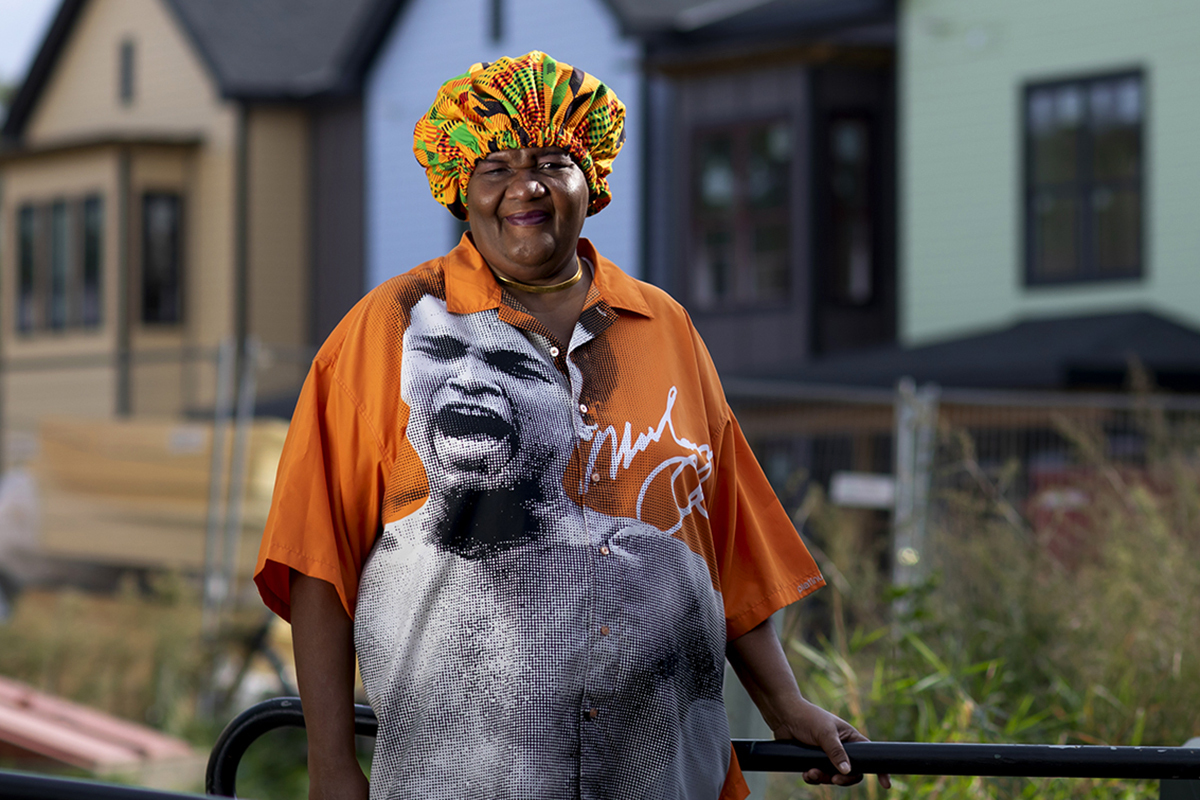
Denise Baker, beloved Bayview resident, passed away in October 2023. Denise embodied so much that Bayview stands for... compassion, kindness, generosity, and gratitude. She will be greatly missed.
Design Justice in Action
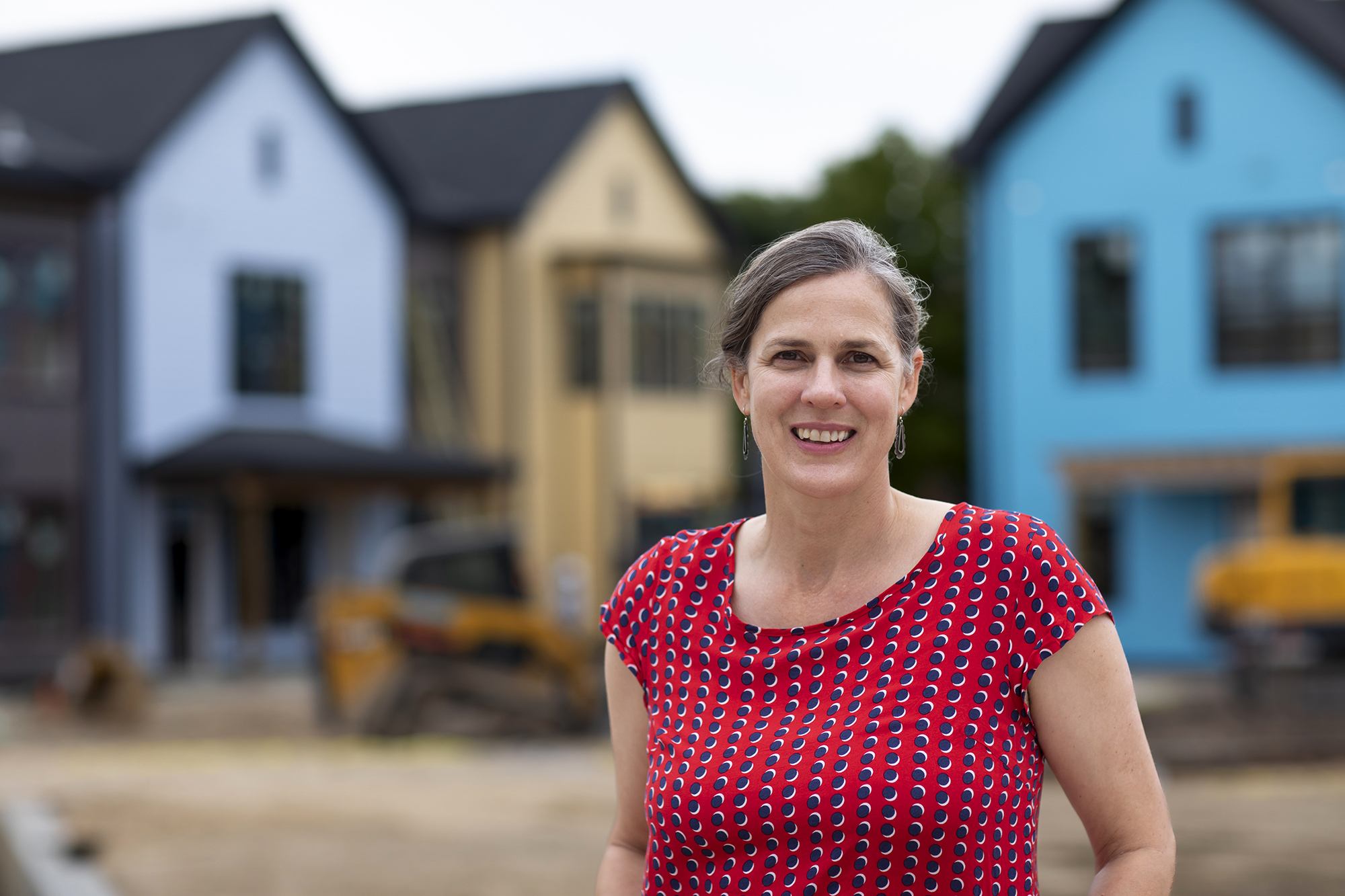
“It started with a belief that the people who are going to use the space, live in the space, call the space their home, are the experts on what it is they need and what’s going to help them and their families thrive."
—Alexis London, Executive Director

“I feel so comfortable to share my mind. I feel safe. I feel at home.”
—Gabrielle Ward, Resident
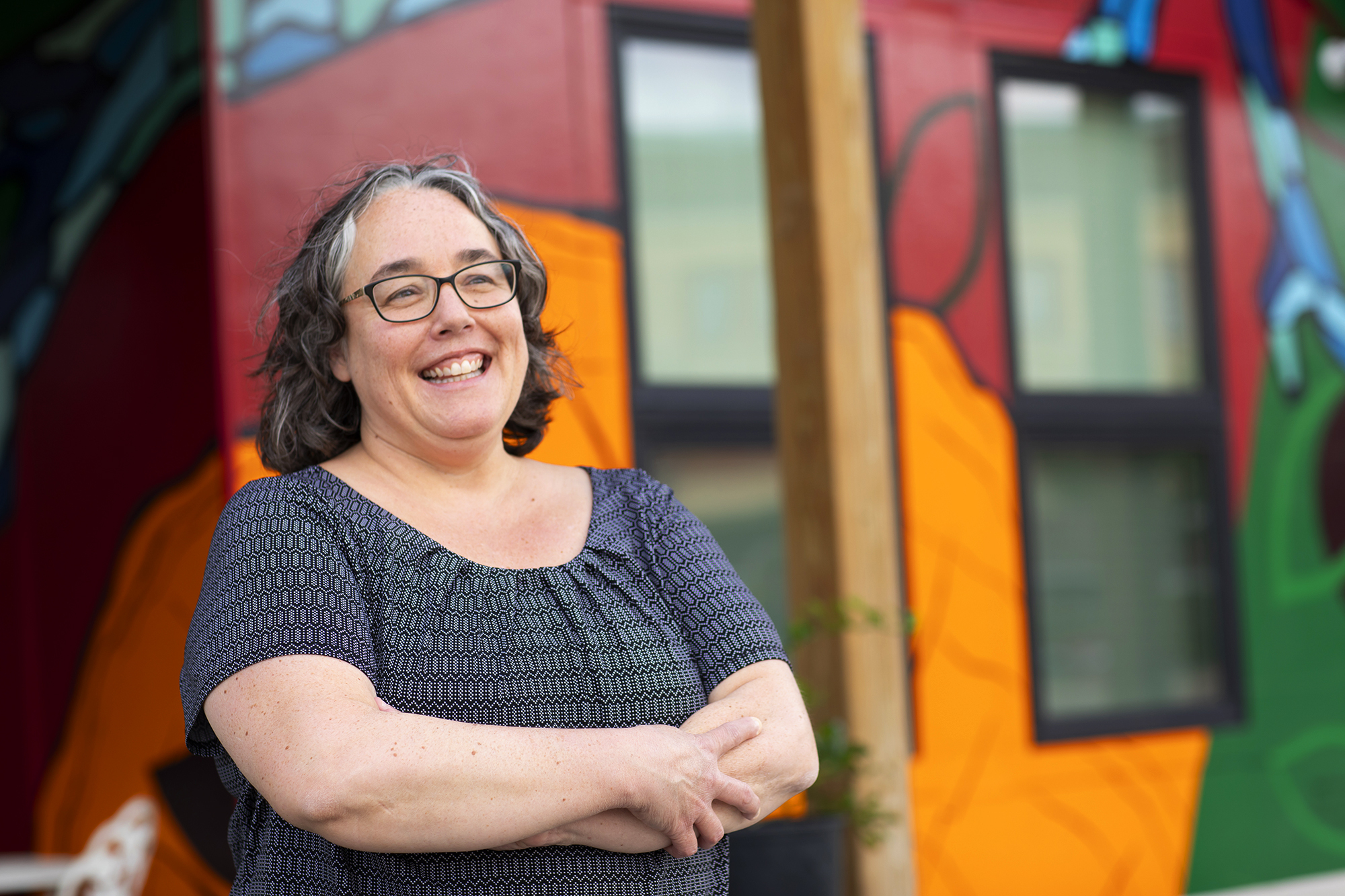
"We heard that residents want gardening and places that elevate their spirit, and they want color and beauty and air conditioning. This is what we did in the design."
—Diane Eddings, Housing Manager
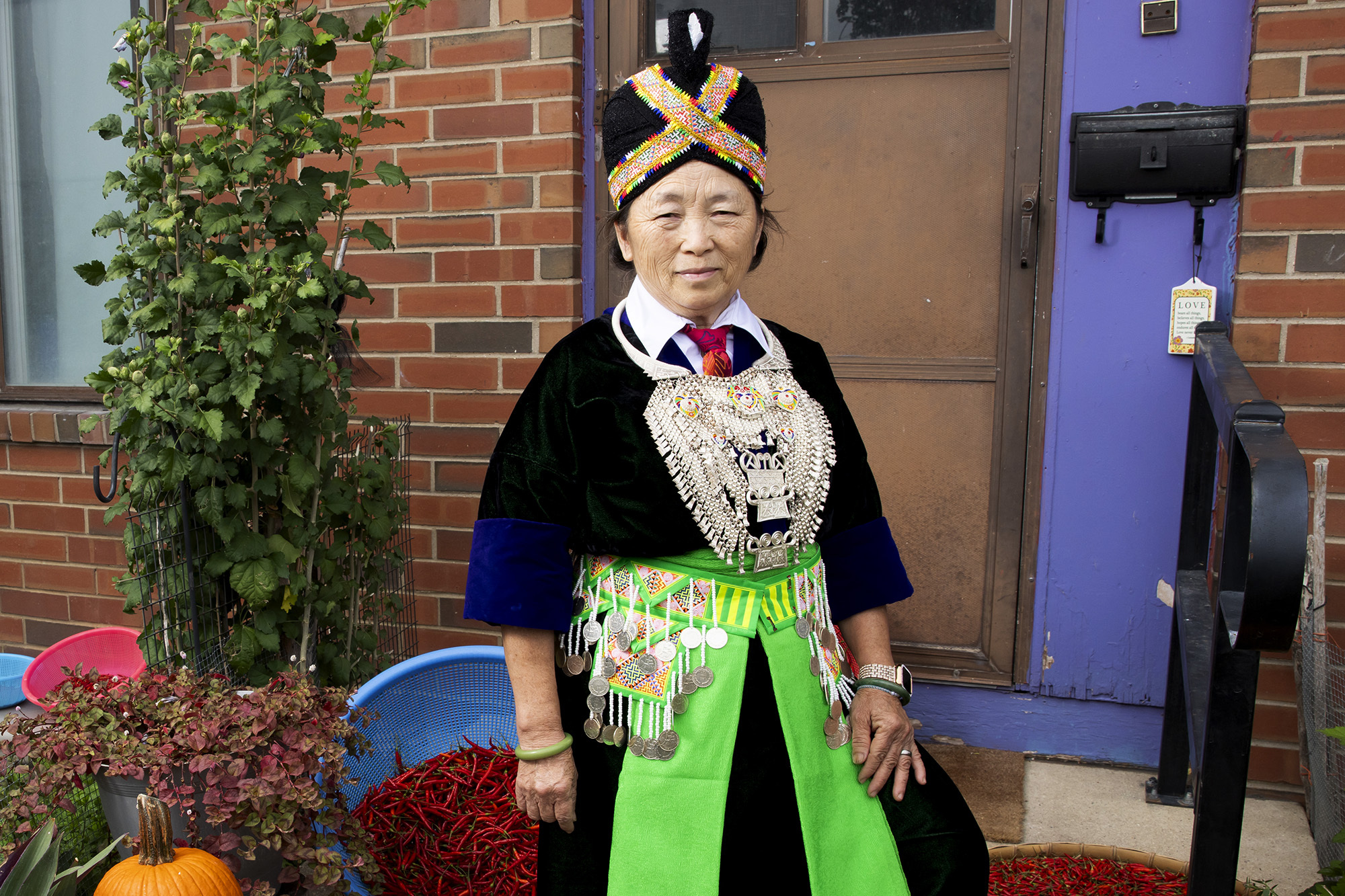
“I spend more time at the community center than I do in my home.” Mee Vang appreciates the welcome she gets from the staff and the opportunity to access groceries and food.
—Mee Vang, Resident



